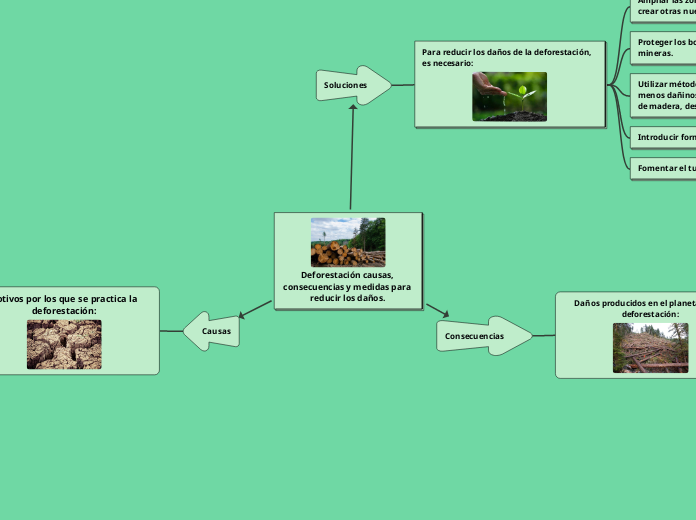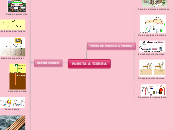Deforestación causas, consecuencias y medidas para reducir los daños.
To name your story, you have to think about the overall message and what you want your audience to understand from the story. Also, make it relevant and easy to remember.
Causas
The ending of a story is essential. We all know that if the ending is weak, what happened before loses its importance. So make it unpredictable, but fair. A resolved ending answers all the questions and ties up any loose threads from the plot.
Motivos por los que se practica la deforestación:
This is the closure section of the story.
See examples of possible outcomes below:
- all problems have been solved
- it's clear how each one of your characters ends up
- your main character is transformed by the challenge
Despeje de tierras para su desarrollo, mejora (en zonas urbanas).
Para la liberación de tierras con el fin de utilizarlas para la cría de ganado, el cultivo de cosechas, la extracción de recursos minerales, etc.
Para conseguir de la madera y las hojas elementos de coníferas utilizados en la industria médica o en la producción química.
Try answering these questions to come up with a closure:
- Have all the problems been solved?
- Is there a clear picture of what happens with each character in the story?
- Has the challenge transformed your main character?
- How do the characters feel in the end?
Para procesar las materias primas para producir papel, muebles, etc.
Consecuencias
The middle of the story is where you add layers of complications that will lead to the end. Reveal more about the character's journey. Did their personality go through changes? How did they overcome the challenges? And as you build up the story’s central conflict, make it more personal to that character. Also, from the middle act, you have to lead into the final act.
Daños producidos en el planeta por la deforestación:
Each story has a main character and that character usually needs to solve a problem or challenge. The character's challenge is the one that creates tension throughout the story.
Más de un millón de especies que viven en los bosques tropicales están amenazadas por la extinción
se eliminan plantas de especies irremplazables utilizadas para medicinas y se suprimen muchos recursos biológicos valiosos para la humanidad.
La quema de bosques causa contaminación de monóxido de carbono en el aire .
Cada año se destruyen millones de hectáreas de bosques caducifolios y de coníferas.
In most stories, there are 3 challenges. The number 3 is a mystical number symbolizing completeness. Try to come up with interesting challenges with which your character needs to struggle.
See a few examples below:
- turns into a werewolf at night
- is sent back in time
Soluciones
In the beginning of the story (or the exposition), you will need to introduce the setting and characters. You might also want to introduce the main conflict. This part of the story is important because it gives the reader necessary background information and maybe even a first insight into a character’s personality.
Para reducir los daños de la deforestación, es necesario:
The setting (time & place) of a story can change throughout the plot.
Fomentar el turismo ecológico.
Introducir formas de reciclar la madera.
The time of the story can also change. It can describe the event of a single day or can include an entire year's plot. Anyway, don't forget to mention it.
Utilizar métodos forestales eficaces y menos dañinos. Minimizar los desperdicios de madera, desarrollar formas de usarlos.
Proteger los bosques de las actividades mineras.
Ampliar las zonas protegidas existentes y crear otras nuevas, las reservas forestales.
Your story can take place wherever your imagination will take you to.
For example: in an elevator, in an enchanted forest, etc. Don't forget to give details of the environment each time the setting changes, otherwise, the story can be confusing. Also, mention the seasons as each of them has unique weather and events.











